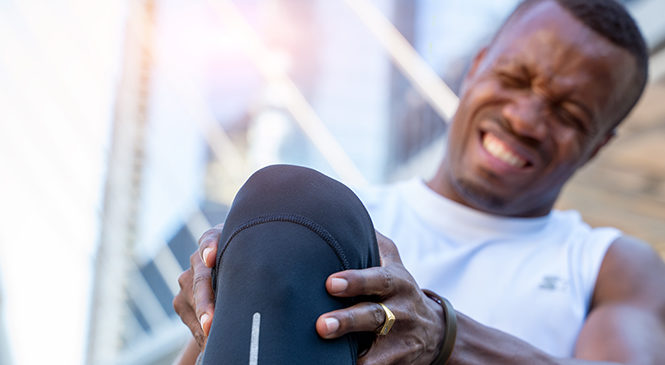You use it when you throw a baseball, paint a ceiling, and lift a barbell over your head: the rotator cuff. It’s a collection of four muscles and attached tendons that anchor your upper arm bone – the humerus – into the shoulder socket. A painful tear can sideline an athlete or limit a person’s ability to work, making it anything but humorous.
These tears, when the rotator cuff separates from the bone, are among the most common types of shoulder injuries, accounting for 4.5 million doctor visits each year, and become more common as we age. There are two types of tears:
- Degenerative tears
- Acute tears
Degenerative tears occur most frequently and are gradual. They’re caused by wear and tear over time or repetitive motions like the swinging of a tennis racket or in jobs like painting or window cleaning. Acute tears are sudden, and might follow a mishap or trauma, like a nasty tumble on the ski slope.
These symptoms might suggest a tear
Do you consistently feel pain when reaching for something on a high shelf or brushing your hair? That might be a sign that you have a torn rotator cuff. Other symptoms include having difficulty extending your arm behind your back and weakness in your arm. Arm pain typically begins at the front of the shoulder and radiates down. It’s important that you get checked out by a physician, who will perform a series of functional tests, asking you to lift, rotate, and carefully drop your arm in certain ways. Imaging tests like an MRI or ultrasound may also be used to confirm a diagnosis.
You’ve been diagnosed. What’s next?
Before your doctor recommends a treatment course, several factors will be considered, including your general health, age, activity level, and the severity of the tear. As with many orthopedic injuries, there is a wide-range of operative and non-operative treatments. Your doctor will make a recommendation after your diagnosis and may suggest resting the shoulder and taking anti-inflammatory medication like ibuprofen to bring down the swelling as a first line of defense. Physical therapy might also be considered as well as a cortisone injection which can be very effective in some cases. If the pain persists, however, your physician may recommend surgery.
Suture anchors are an important tool in rotator cuff repairs
If surgery is required to repair your rotator cuff, your orthopedic surgeon will likely use a suture anchor to reattach muscle and tendon to bone. Suture anchors were developed about three decades ago and they’ve advanced over time. Although they vary in shape and size, they resemble a nail or a screw with an eyelet that allows the surgeon to compress the tendon back down to bone using the suture. The goal for this type of rotator cuff repair is to bring the tendon back to a more anatomical position and compress it to the bone to allow for biologic healing.
New suture anchor innovations include the use of biodegradable materials. Products like the Twist AP Biocomposite Screw-In Suture Anchor provide support as the body heals and then are absorbed back into the body over time. They are as strong as their metal counterparts, but have several advantages, including that they are MRI-friendly. (Patients with certain types of metal in their bodies cannot undergo an MRI.)
Rotator cuff tears are painful, activity-limiting injuries, but with the help of an orthopedic surgeon and medical advancements like suture anchors, you’ll be back to your active lifestyle in no time.
Want to locate a physician specializing in rotator cuff tears in your area? Try our Find the Doctor Tool or Contact Us for more info!




